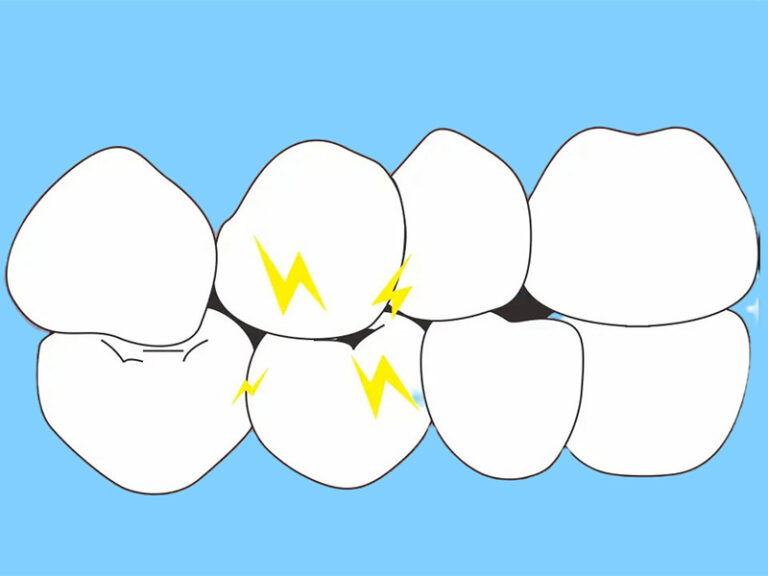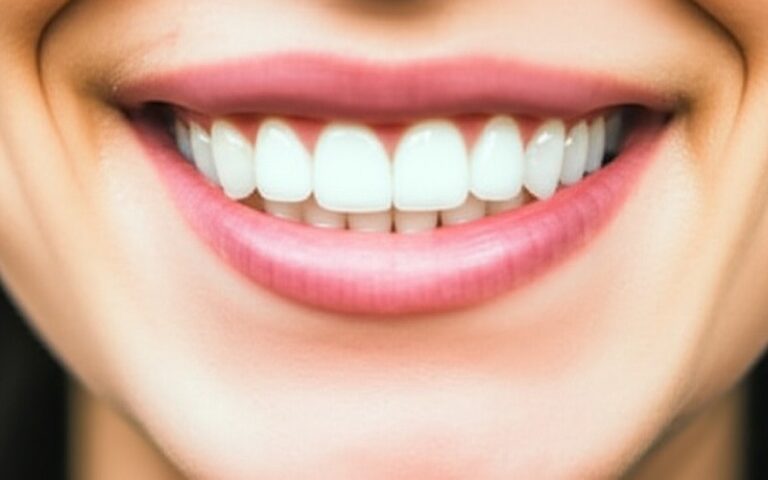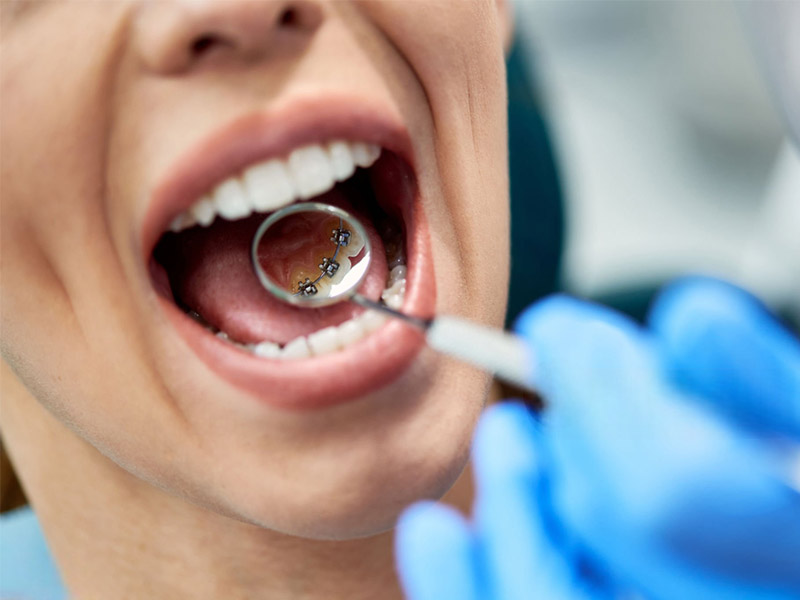
The Pros and Cons of Lingual Braces: Everything to Know About Braces on the Back of Your Teeth
Lingual braces are special braces that hide on the back of your teeth. This idea of a secret smile-straightening tool sounded amazing. This article is for you if you are curious about this invisible option. We will talk about what a lingual brace is, who it is for, and how it stacks up against other choices. My goal is to give you a simple, clear guide. This will help you and your Kieferorthopäde decide if this treatment option is the right one for your smile.
Inhaltsübersicht
What Exactly Are Lingual Braces and How Do They Work?
Lingual braces are a type von orthodontic braces that an Kieferorthopäde places on the inside surface of your teeth. This is the side your tongue touches, also called the lingual side. The word “lingual” just means related to the tongue. Because they are on the hinter den Zähnen, no one can see them when you smile or talk. This is why many people call them invisible braces.
Einfach like traditional braces, a lingual brace System verwendet brackets and wires to move your teeth. The main difference is where they are placed. Each Halterung is custom-made for each tooth. This is different from Metallspangen, where the brackets are usually standard sizes. The custom fit helps the lingual brace work effectively to straighten your smile from behind the teeth. It’s a very clever way to get a great result without anyone knowing you are going through kieferorthopädische Behandlung.
The way lingual braces work is pretty neat. An archwire connects all the custom-made brackets. Your Kieferorthopäde will tighten this wire over time. This gentle, steady pressure slowly pulls your teeth into their correct positions. So, while the lingual brace is hidden, it is working hard. This kind of braces provides a powerful and precise way to fix your teeth. The lingual brace is a fantastic piece of dental technology.
Are You a Good Candidate for Lingual Braces?
This is a really important question to ask. So, are you a good candidate for lingual braces? Lingual braces are great for many people, but not for everyone. They work best for adults and older teens who are concerned about how they look during treatment. If you need braces but don’t want the look of Metallspangen, a lingual brace could be perfect.
However, there are some dental issues that can make you a less ideal candidate for lingual braces. For example, if you have a very deep overbite, your top teeth might bite down on the lingual brackets on your lower teeth. This can cause the Halterung to break off. Also, very small teeth may not have enough surface area on the back to attach a Halterung securely.
The only way to know for sure is to talk to a professional. You need to schedule a visit with an Kieferorthopäde who has experience with linguale Kieferorthopädie. They will look at your teeth, your bite, and your goals. They can then determine whether lingual braces are the best choice for you. A good Kieferorthopäde will explain all your braces options so you can make an informed choice.
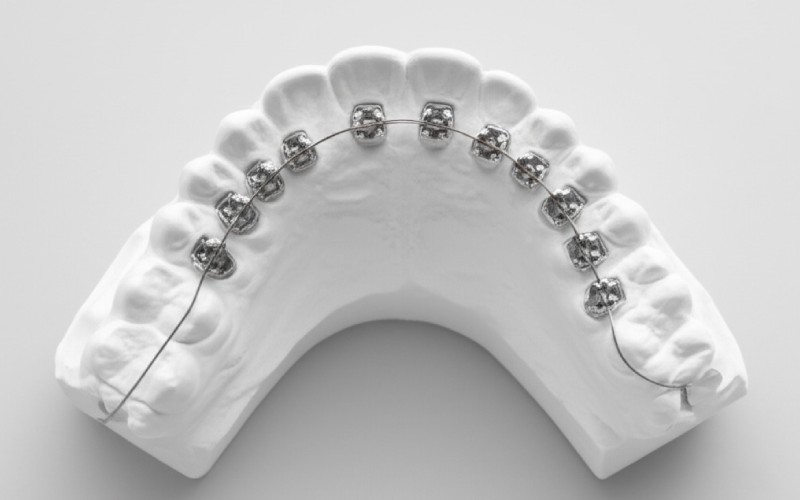
What Are the Biggest Advantages of Lingual Braces?
The number one reason people choose a lingual brace is simple: they are hidden. This is the biggest of the advantages of lingual braces. Unlike traditional braces, which are on the front of the teeth, lingual braces are hidden from view. You can smile for photos, give presentations at work, and go on dates without feeling self-conscious about your braces treatment. Die braces remain completely out of sight.
Another great benefit is that lingual braces offer very precise results. Because each Halterung is custom-made for your teeth using special computer software, the Kieferorthopäde has a lot of control. This can lead to a fantastic final result. Also, if any staining or white spots happen from a Halterung, they will be on the back of the teeth, where no one will ever see them.
Finally, lingual braces are a great option for people who play wind instruments or contact sports. Conventional braces can cut the inside of your lips. A lingual brace protects your lips because the smooth front surfaces of your teeth are still exposed. It’s a small detail, but one that makes a big difference in daily comfort for some people.
What Are the Cons of Lingual Braces I Should Know About?
Now, let’s talk about the other side. Every treatment option has its pros and cons. When looking at the pros and cons of lingual, it’s important to be honest about the challenges. The biggest disadvantage is the initial adjustment period. Because the Klammern are on the lingual side of the teeth, your tongue will be hitting them all the time.
This can cause some real discomfort at first. Lingual braces users often report tongue sores and a temporary lisp or change in their speech. It takes some time for your tongue to get used to sharing space with the new lingual appliance. For most people, this gets much better within a few weeks, but it’s something you must be prepared for. Braces may make talking feel funny for a bit.
Another one of the cons of lingual braces is that cleaning is harder. It’s tough to see back there, so Mundhygiene requires extra effort. Lingual braces require careful brushing and flossing to prevent plaque buildup. Also, appointments with your Kieferorthopäde might take a bit longer because adjusting wires on the back of your teeth is more complex for them to do.
Lingual Braces vs. Traditional Braces: What’s the Real Difference?
When we do a lingual braces vs traditionelle Zahnspange comparison, the most obvious difference is looks. Traditionelle Metallklammern are on the front, and a lingual brace is on the back. But the differences go deeper than that. The brackets used for a lingual brace are custom-made for your teeth, while traditionelle Zahnspange often use more standardized brackets. This customization is one reason Lingualspange are special.
The feel is also very different. Conventional metal braces can rub against your lips and cheeks. Linguale Zahnspange, on the other hand, rub against your tongue. You have to decide which irritation you would rather deal with. In terms of how they work, both are very effective. They both use the classic Halterung and wire system that has been proven to straighten teeth well for decades. They differ from traditional braces in application, not in the basic idea.
In terms of Kieferorthopädie, the skill needed is also different. Not every Kieferorthopäde offers a lingual brace service. It requires special training and equipment. This is why lingual braces are less common than normale Zahnspange oder Keramik-Zahnspange. When you are getting braces, fragen Sie Ihren Kieferorthopäde about their experience with different types of braces.
How Do Lingual Braces Compare to Clear Aligners Like Invisalign?
This is a common lingual braces compared zu klare Aligner question. Both Lingualspange und clear aligners like Invisalign are popular choices for people who want a less visible kieferorthopädische Behandlung. The biggest difference is that Lingualspange are fixed, while klare Aligner are removable. The lingual brace is bonded to your teeth and stays there 24/7 until the Kieferorthopäde removes it.
Invisalign uses a series of clear plastic trays that you wear over your teeth. You have to take them out to eat and drink anything but water. This means you have to be very disciplined about wearing them for 20-22 hours a day. With a lingual brace, you don’t have to worry about that. It’s always working. This makes the lingual brace a good option for people who might forget to put their aligners back in.
Both can be great options. Klare Aligner are often seen as more comfortable since there are no brackets or wires. However, a lingual brace can sometimes fix more complex dental problems that Invisalign can’t handle. It’s a vs lingual braces debate where the winner depends entirely on your specific needs and lifestyle.
How Much Do Lingual Braces Cost?
I won’t sugarcoat it: the cost of lingual braces is high. In fact, Lingualspange are usually the most expensive type of braces you can get. The braces cost more for a few key reasons. First, the lingual brackets are 100% custom-made for your teeth using advanced CAD/CAM technology. This custom manufacturing is a major expense.
Second, the Kieferorthopäde needs special training to provide lingual orthodontic treatment. The appointments are also longer and more difficult. The process of placing the lingual brace and making adjustments is more delicate than with traditionelle Zahnspange. All of this extra time, skill, and technology adds up. You can expect them to be significantly more expensive than traditional braces and often more costly than klare Alignerauch.
Wenn considering lingual braces, you have to weigh the high cost against the benefit of total invisibility. For some people, especially professionals in the public eye, the investment is worth it. For others, a more affordable option like Keramik-Zahnspange (which are clear or tooth-colored) or traditionelle Zahnspange might make more sense.
What is the Lingual Orthodontic Treatment Process Like?
The journey for getting lingual braces starts with a consultation. Your Kieferorthopäde will check if a lingual brace will work for you. If you decide to go ahead, the next step is taking very precise impressions or 3D digital scans of your teeth. These scans are sent to a Dentallabor. There, your custom lingual brace Klammern are designed and made to fit each tooth perfectly.
Your next big appointment is for bonding. The Kieferorthopäde will carefully glue the lingual appliance onto the hinter den Zähnen. This is a very precise process that can take a bit of time. After the lingual brace is on, you will have regular appointments every 6-8 weeks for adjustments. During these visits, the wire will be tightened or changed to keep your teeth moving.
The total treatment time with lingual braces is usually similar to traditional braces or aligners, typically ranging from 18 to 36 months. It all depends on how much correction your teeth need. The entire lingual orthodontic journey is a partnership between you and your Kieferorthopäde to get you to your goal of a beautiful, straight smile.
Is Oral Hygiene More Difficult with Lingual Braces?
Yes, keeping your teeth clean with a lingual brace is more challenging. I think it’s important to be honest about this. Because the Klammern are on the inside, you can’t easily see if you’ve missed a spot while brushing. Food can get trapped around the lingual brace hardware, and if it’s not cleaned away, it can lead to plaque, cavities, and gum problems.
Ihr Kieferorthopäde and dental hygienist will become your best friends. They will show you special techniques for brushing and flossing around your lingual brace. Many people find that a water flosser is a huge help. It can flush out food particles from those hard-to-reach places. You will also need to use an interdental brush to clean between the Klammern.
Gut Mundhygiene is absolutely essential for anyone with braces, but it is especially true for Lingualspange. You have to be committed to spending a few extra minutes each day on your cleaning routine. This effort will protect your teeth and ensure that when your Lingualspange come off, you have a healthy and straight smile to show for it.
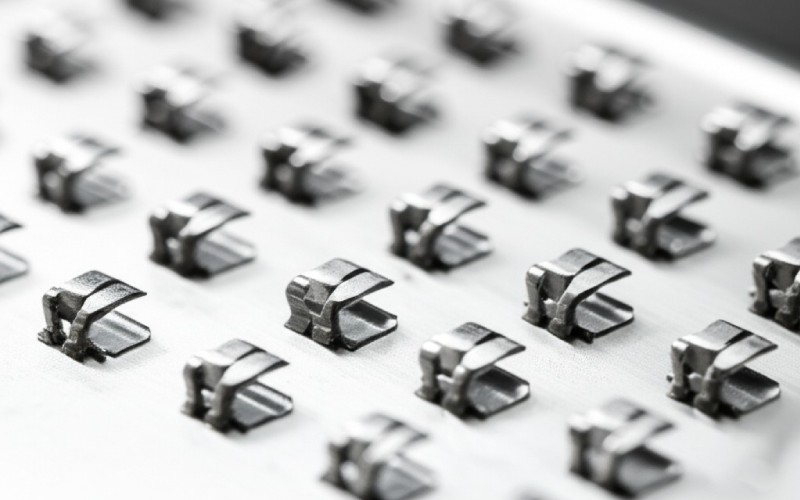
Are There Famous Celebrities with Lingual Braces?
You might be surprised to learn how many famous people have used a lingual brace to perfect their smiles. Because lingual braces are invisible, we often have no idea who is wearing them! This is exactly why they are so popular in Hollywood and with other public figures. Many celebrities with lingual braces have been able to undergo complete kieferorthopädische treatment without the press or public ever knowing.
While many keep it a secret, some stars have been reported to use them. People like Kate Middleton, Miley Cyrus, and Zac Efron are often mentioned as having had Lingualspange. They were able to improve their smiles for the camera without wearing visible traditionelle Zahnspange. This shows that if you need braces but want to keep them private, lingual braces are a good option.
Diese type of lingual treatment allows people to maintain a professional or public image without interruption. It is proof that lingual braces are a good choice for anyone who values looks and doesn’t want their dental work to be a topic of conversation. It shows that lingual braces give you a way to secretly improve your smile.
Das Wichtigste zur Erinnerung
As you think about whether lingual braces are the right option for you, here is a quick summary of what I’ve learned.
- They Are Invisible:
Linguale Zahnspangeare placed on thehinter den Zähnen, so no one will know you are wearing them. - They Are Custom-Made: Jede
Halterungis made just for your tooth, which allows for very precise and effective treatment. - They Are Expensive: Be prepared for a higher cost. They are often more
expensive than traditionalbraces orklare Aligner. - There is an Adjustment Period: Your tongue will need a few weeks to get used to the
Klammern, which can affect your speech and comfort at first. - Cleaning is a Challenge: You must be very dedicated to your
Mundhygieneroutine to keep your teeth healthy during treatment. - Consult an Expert: The only way to know if
lingual braces suityou is to talk to an experiencedKieferorthopäde.


